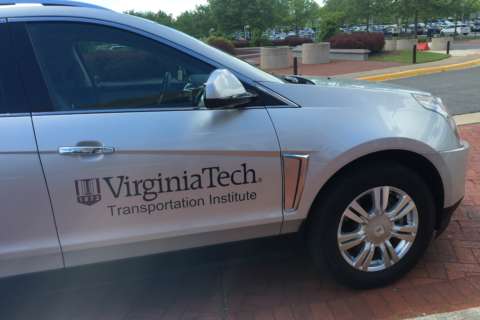WASHINGTON — Cutting-edge connected and autonomous cars are set to run through the 95 and 495 Express Lanes for the next three years, including while regular toll-paying drivers and carpoolers are in the lanes.
Virginia’s Commonwealth Transportation Board is set to approve a three-year agreement Wednesday among the Virginia Department of Transportation, the private company that operates the 95 and 495 Express Lanes, and the Federal Highway Administration’s Office of Operations Research and Development that would permit new testing to move forward.
The focus of these tests is whether caravans of cars or trucks could speed down a highway just inches apart if the vehicles could communicate to each other about the precise speed to travel, and whether those caravans can successfully run in the same lanes as regular traffic.
As part of the tests, federal researchers want to know what wireless communication tools might be required in cars or trucks, or built into the road or road signs, and will consider the importance of lane-assist technology to keep the autonomous vehicles on track. The researchers will review the overall impacts of each test on mobility, safety and the environment, with the hope that the “activities lead to increasing the effective handling capacity of the existing roadway system without the expense of building and maintaining new roads.”
Initial testing of speed synchronization technology was just completed on Interstate 66 inside the Capital Beltway, according to documents tied to this agreement.
Any testing of the speed harmonization, cooperative adaptive cruise control or a new effort to automate lane changes and merging would first be done in the 95 or 495 Express Lanes while the lanes are closed, but then the agreement allows real-world testing during “light traffic conditions.”
VDOT has the right to set the times of day or days of the week when the testing is permitted, and both VDOT and Express Lanes operator Transurban are entitled to access all data from each of the tests.
The agreement is not exclusive, so other researchers can continue to use the lanes as well.
All of the test vehicles, sensors, radios and drivers for the testing will be provided by federal researchers, who will also install and remove any additional sensors they need for each test.






